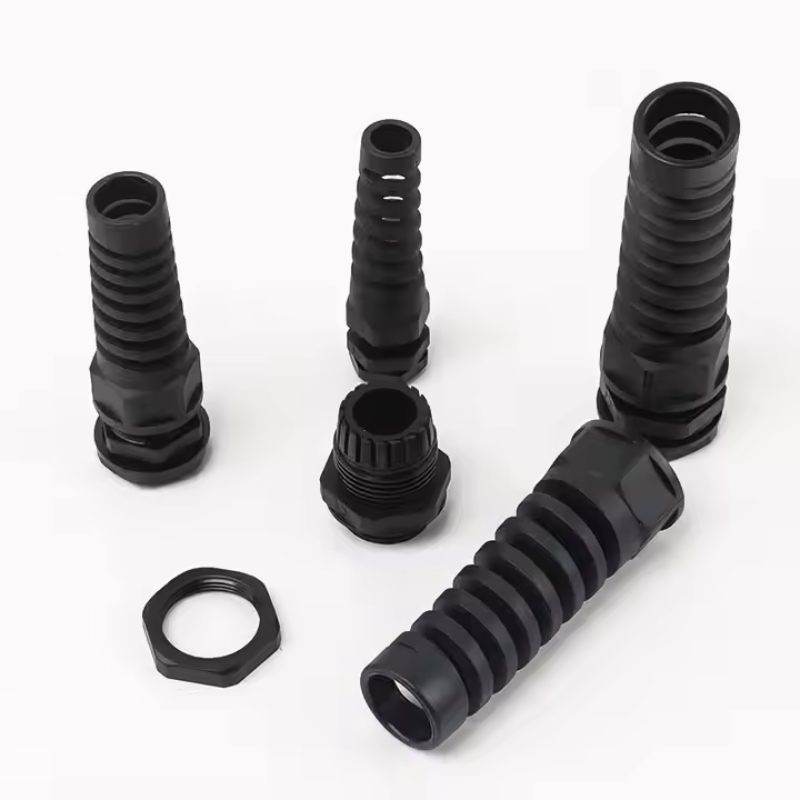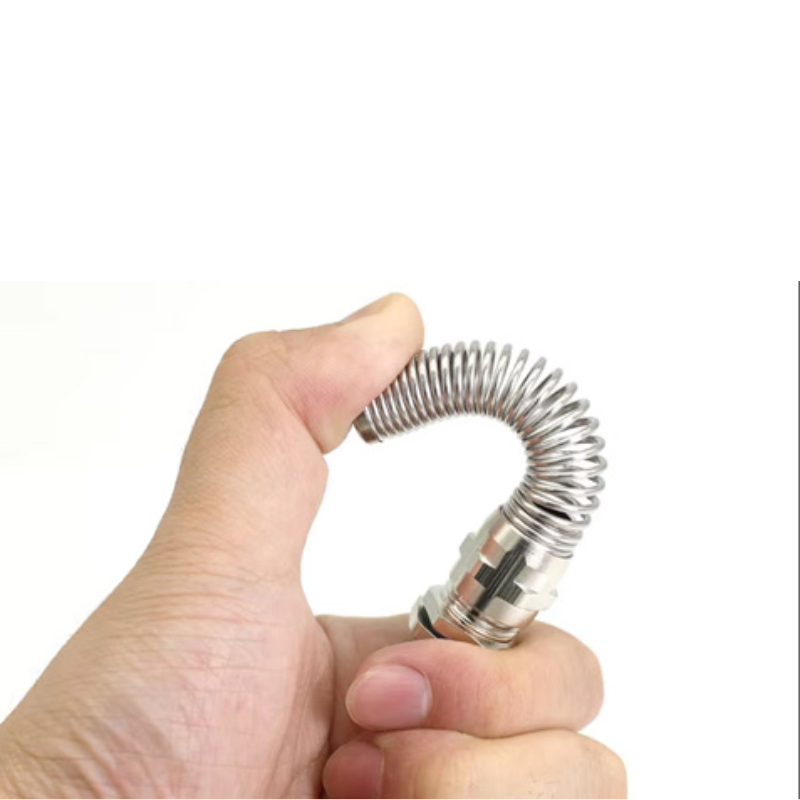Choosing the wrong cable gland for your fiber optic installation can lead to signal loss, moisture ingress, and costly system failures. With fiber optic networks becoming the backbone of modern telecommunications, selecting the appropriate gland isn’t just about making a connection—it’s about ensuring long-term reliability and performance.
The key to selecting fiber optic cable glands lies in understanding your environmental conditions, cable specifications, and protection requirements. You need glands that provide excellent sealing (IP68 rating1), maintain bend radius2 protection, and offer electromagnetic compatibility when required.
I’ve seen too many projects fail because engineers overlooked critical factors like temperature cycling, chemical exposure, or simply chose the cheapest option available. Let me share what I’ve learned from helping customers worldwide avoid these costly mistakes.
Table of Contents
- What Makes Fiber Optic Cable Glands Different?
- How to Determine Your Environmental Requirements?
- What Are the Key Technical Specifications?
- How to Choose the Right Material and Design?
- What Common Mistakes Should You Avoid?
- FAQs About Fiber Optic Cable Glands
What Makes Fiber Optic Cable Glands Different?
Fiber optic cable glands require specialized design features that standard electrical cable glands simply cannot provide. The delicate nature of optical fibers demands precise bend radius control, superior sealing, and often enhanced vibration resistance.
Unlike traditional electrical cables, fiber optic cables are extremely sensitive to mechanical stress. A standard cable gland that works perfectly for copper conductors can easily damage optical fibers through excessive compression or inadequate bend radius protection. This is why we developed specialized fiber optic glands with integrated strain relief and controlled compression zones.
Key Differentiating Features
Bend Radius Protection: Fiber optic cables have strict minimum bend radius requirements—typically 10 times the cable diameter for single-mode fibers3 and 20 times for multimode. Our fiber optic glands incorporate curved entry paths and internal guides to maintain these critical specifications.
Controlled Compression: While electrical cables can withstand significant compression forces, optical fibers require gentle, evenly distributed pressure. Specialized sealing systems use soft elastomers and graduated compression to achieve IP68 sealing without fiber damage.
Vibration Resistance: Telecommunications installations often face continuous vibration from HVAC systems, traffic, or industrial equipment. Enhanced strain relief designs prevent micro-movements that could cause signal degradation over time.
I remember working with David, a network engineer from a major telecom provider in Germany. His team initially tried using standard nylon cable glands for their fiber installation to save costs. Within six months, they experienced intermittent signal losses during temperature changes. After switching to our specialized fiber optic glands with integrated bend radius protection, the issues disappeared completely. 😊
How to Determine Your Environmental Requirements?
Environmental assessment is the foundation of proper gland selection—you must understand temperature ranges, chemical exposure, UV radiation, and ingress protection needs before making any technical decisions.
The environment where your fiber optic cables operate directly impacts material selection, sealing requirements, and long-term reliability. I’ve seen installations fail because engineers didn’t account for seasonal temperature variations or underestimated chemical exposure levels.

Critical Environmental Factors
| Factor | Indoor Applications | Outdoor Applications | Industrial Applications |
|---|---|---|---|
| Temperature Range | -10°C to +60°C | -40°C to +85°C | -20°C to +120°C |
| IP Rating Required | IP54 minimum | IP68 essential | IP68 + chemical resistance |
| UV Resistance | Not required | UV stabilized materials | UV + chemical resistance |
| Vibration Level | Low | Medium (wind/weather) | High (machinery) |
Indoor Installations: Focus on dust protection (IP54 minimum), moderate temperature stability, and easy maintenance access. Nylon glands often provide excellent cost-effectiveness for controlled environments.
Outdoor Installations: Require maximum ingress protection (IP68), UV-stabilized materials, and wide temperature cycling capability. Stainless steel or UV-resistant nylon compounds are essential.
Industrial Environments: Demand chemical resistance, high-temperature capability, and enhanced vibration protection. Brass or stainless steel construction with specialized elastomers becomes necessary.
Hassan, who manages a petrochemical facility in Saudi Arabia, learned this lesson the hard way. His initial installation used standard outdoor-rated glands, but the harsh chemical environment degraded the sealing materials within two years. We provided chemical-resistant stainless steel glands with PTFE4 seals, and they’ve performed flawlessly for over five years now.
What Are the Key Technical Specifications?
Cable diameter, thread size, and ingress protection rating form the technical foundation of gland selection—get these wrong, and even the best materials won’t save your installation.
Proper technical specification matching ensures reliable sealing, adequate strain relief, and long-term performance. Each specification serves a critical function in the overall system integrity.
Essential Technical Parameters
Cable Diameter Range: Most fiber optic cables range from 3mm to 20mm outer diameter. Your gland must accommodate the specific cable size with appropriate sealing range. Our glands typically offer 2-3mm adjustment range per size to handle manufacturing tolerances.
Thread Specifications: Common options include:
Ingress Protection (IP) Ratings:
- IP54: Dust protected, splash resistant (indoor minimum)
- IP65: Dust tight, water jet resistant (outdoor standard)
- IP68: Dust tight, continuous submersion (marine/industrial)
Performance Specifications
Temperature Range: Verify both operating and storage temperature requirements. Elastomer seals are often the limiting factor—standard NBR seals work to +80°C, while silicone or EPDM extends to +150°C.
Tensile Strength: Fiber optic cables require gentler handling than electrical cables. Look for glands rated for 50-100N pull force rather than the 500N+ ratings common for power cables.
Bend Radius Maintenance: Critical for signal integrity. Quality glands maintain minimum bend radius even under installation stress and long-term environmental cycling.
How to Choose the Right Material and Design?
Material selection directly impacts longevity, chemical compatibility, and cost-effectiveness—brass offers durability, stainless steel provides ultimate corrosion resistance, while nylon delivers cost-effective performance for controlled environments.
The material choice affects not just initial cost but long-term maintenance requirements and system reliability. Each material has distinct advantages depending on your application requirements.
Material Comparison
| Material | Advantages | Best Applications | Limitations |
|---|---|---|---|
| Nylon PA66 | Cost-effective, lightweight, chemical resistant | Indoor, telecom, data centers | UV degradation, temperature limits |
| Brass (Nickel Plated) | Excellent conductivity, moderate cost, good strength | General outdoor, industrial | Corrosion in marine environments |
| Stainless Steel 316L | Superior corrosion resistance, high temperature | Marine, chemical, extreme environments | Higher cost, weight |
Nylon Advantages: Our glass-filled PA66 glands offer excellent chemical resistance, lightweight installation, and cost-effectiveness for indoor applications. The material naturally dampens vibration and provides good insulation properties.
Brass Benefits: Nickel-plated brass combines mechanical strength with moderate corrosion resistance. The material offers excellent threading durability and maintains consistent torque specifications over time.
Stainless Steel Applications: When facing saltwater, chemical exposure, or extreme temperatures, 316L stainless steel provides unmatched durability. The material maintains structural integrity across wide temperature ranges and resists virtually all environmental challenges.
Design Considerations
Single vs. Multi-Cable Designs: Single-cable glands offer maximum sealing integrity and individual strain relief. Multi-cable versions reduce enclosure penetrations but require careful cable diameter matching.
Strain Relief Options: Integrated bend radius protection, adjustable strain relief boots, and graduated compression systems all contribute to long-term fiber protection.
What Common Mistakes Should You Avoid?
The most costly mistakes in fiber optic gland selection involve inadequate environmental assessment, improper installation torque, and choosing price over performance for critical applications.
After helping thousands of customers worldwide, I’ve identified recurring mistakes that lead to premature failures, signal degradation, and costly reinstallations.
Critical Mistakes to Avoid
Over-tightening During Installation: Fiber optic cables are delicate. Excessive installation torque can compress optical fibers, causing immediate or gradual signal loss. Always follow manufacturer torque specifications—typically 15-25 Nm for most sizes.
Ignoring Bend Radius Requirements: Sharp bends at the gland entry point cause immediate signal attenuation. Ensure your gland design maintains minimum bend radius throughout the connection zone.
Inadequate Environmental Protection: Choosing indoor-rated glands for outdoor applications, or standard materials for chemical environments, leads to premature seal failure and moisture ingress.
Wrong Thread Selection: Mismatched threads create stress concentrations and sealing problems. Verify enclosure thread specifications before ordering glands.
Insufficient Cable Diameter Range: Glands with narrow cable diameter ranges may not accommodate manufacturing tolerances or future cable changes. Select glands with adequate adjustment range.
Installation Best Practices
Always perform a trial fit before final installation. Check that the cable seats properly in the strain relief area and that the sealing system engages correctly across the full cable diameter range. Pre-lubricate O-rings with compatible silicone grease to ensure proper sealing and prevent installation damage.
Conclusion
Selecting the right cable glands for fiber optic applications requires careful consideration of environmental conditions, technical specifications, and material compatibility. Focus on bend radius protection, appropriate ingress protection ratings, and proven sealing systems rather than simply choosing the lowest-cost option.
Remember that fiber optic installations represent significant infrastructure investments. The additional cost of properly specified glands is minimal compared to the expense of signal degradation, system downtime, or complete reinstallation. At Bepto, we’re committed to helping you make the right choice the first time, backed by our comprehensive certifications and proven track record in demanding applications worldwide.
FAQs About Fiber Optic Cable Glands
Q: What’s the difference between fiber optic cable glands and regular electrical cable glands?
A: Fiber optic cable glands provide specialized bend radius protection and gentler compression to prevent optical fiber damage, while electrical glands focus primarily on sealing and strain relief without these critical fiber protection features.
Q: How do I determine the correct IP rating for my fiber optic installation?
A: Indoor applications typically require IP54 minimum, outdoor installations need IP68 for weather protection, and industrial environments may require IP68 plus chemical resistance depending on exposure conditions.
Q: Can I use the same cable gland for different fiber optic cable types?
A: Yes, if the cable outer diameters fall within the gland’s sealing range and the bend radius requirements are met. However, verify that armored cables don’t require specialized grounding provisions.
Q: What torque specifications should I use when installing fiber optic cable glands?
A: Most fiber optic glands require 15-25 Nm installation torque, significantly less than electrical cable glands. Always consult manufacturer specifications and use a calibrated torque wrench to prevent over-compression.
Q: How often should fiber optic cable glands be inspected or replaced?
A: Inspect sealing integrity annually in outdoor applications, every 2-3 years for indoor installations. Replace immediately if you notice seal degradation, loose connections, or any signs of moisture ingress around the gland area.
-
See the official definition for the IP68 Ingress Protection rating, which signifies protection against dust and continuous submersion in water. ↩
-
Understand why maintaining a minimum bend radius is critical for the performance and reliability of fiber optic cables. ↩
-
Explore the key differences in construction, application, and performance between single-mode and multimode fibers. ↩
-
Discover the technical properties of Polytetrafluoroethylene (PTFE), known for its exceptional chemical and thermal resistance. ↩
-
Learn about the specifications and applications of the American National Standard Pipe Thread (NPT) standard. ↩




